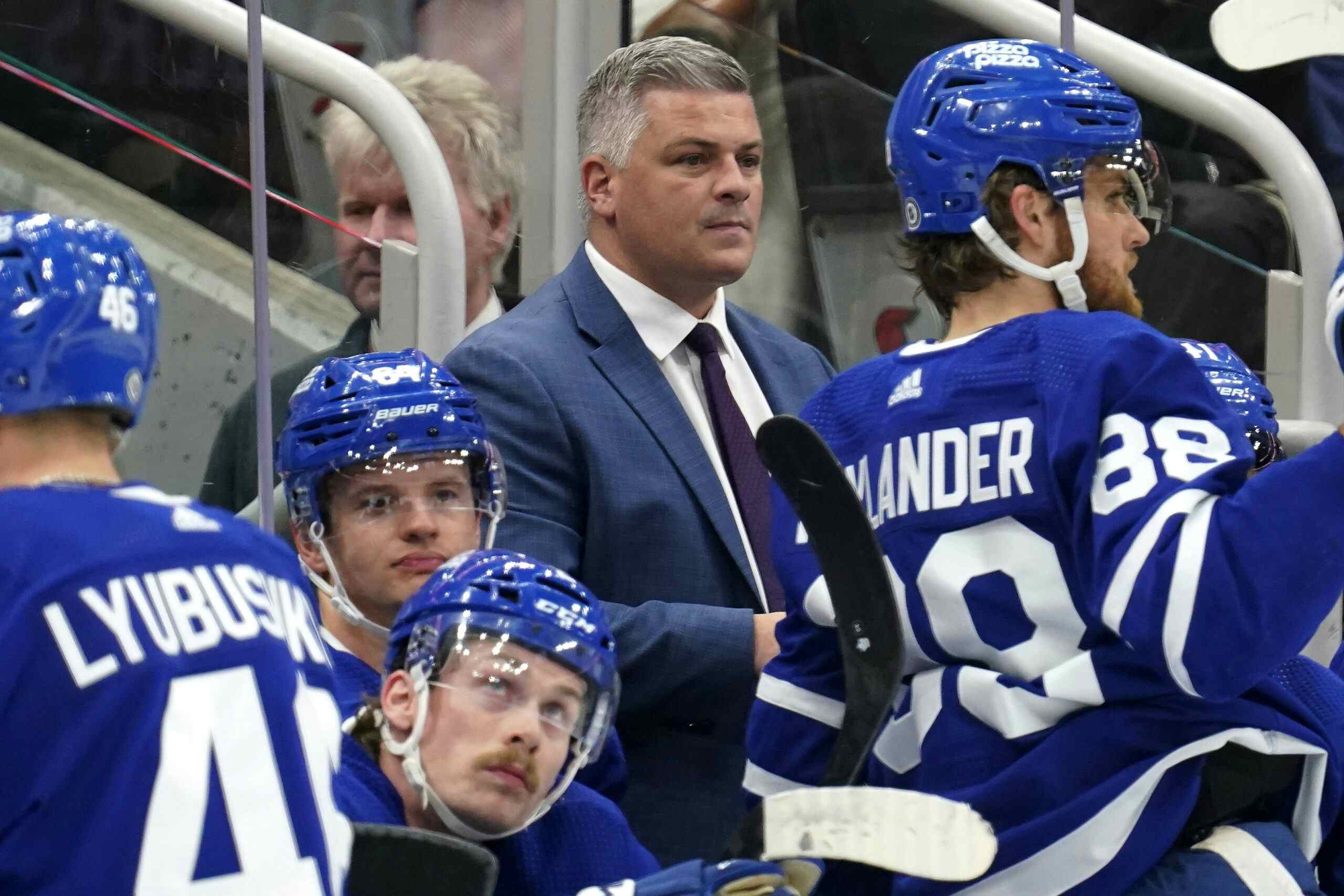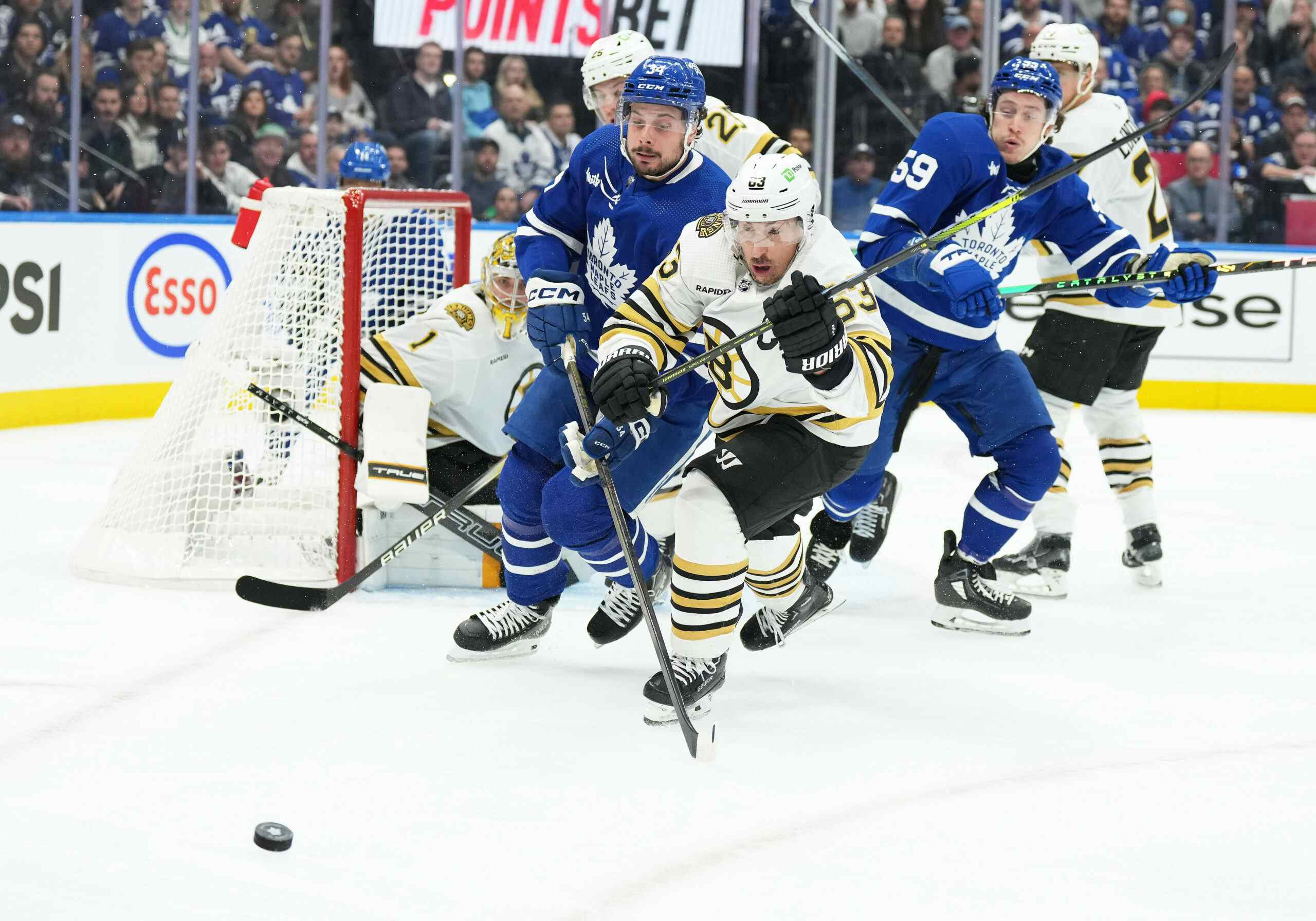Devils Advocate

The Toronto Maple Leafs made a lot of comittments yesterday, signing a couple of free agents, bringing back a few players, and letting a few walk. This comes shortly after a pair of buyouts and a trade acquisition. Opinions are all over the place: Some people hate the end result, some people are okay with it, some like and dislike certain parts, and others are taking the "waait and see" approach. Myself? I feel that this offseason will be seen as Dave Nonis’ defining moment here, the one where he let a glimmer of hope and his personal reputation for being cautious to get to his head, making brash choices that only suit the short term.
But something I will admit, now that everything has sunk in? The Leafs are better suited for the now then they were a few weeks ago.
What The Hell Happened Anyway?
Here’s how the offseason looks so far.
- Leo Komarov signed a 1 year contract with Dynamo Moscow of the KHL. The Leafs retain his rights, and Leo has repeatedly mentioned interest in returning to the NHL at a later point. The Leaf retain his rights as an RFA.
- Jonathan Bernier was acquired on June 23rd in a trade with Los Angeles, for Matt Frattin and Ben Scrivens. The Leafs retain $500,000 of their former players’ salary next year, and came to terms with Bernier on a 2 year, 5.8M deal yesterday. This means his essential cap hit next year is $3.4 million.
- David Bolland was acquired on June 30th in a trade with Chicago, for 2nd and 4th round picks in the 2013 draft, and a 4th in 2014.
- Both allowed compliance buyouts were used on Mike Komisarek and Mikhail Grabovski. Komisarek has since signed a 1 year, $700,000 contract with the Carolina Hurricanes.
- Qualifying offers were sent to Carl Gunnarsson, Cody Franson, Mark Fraser, Nazem Kadri, Joe Colborne, and Spencer Abbott, who are restricted free agents.
- Kevin Marshall and Trevor Smith signed undisclosed but likely small, 1 year contracts.
- Clarke MacArthur was allowed to walk, and signed for 2 years, 6.5 million with the Ottawa Senators.
- Will Acton and Ryan Hamilton both left the organization to sign with the Edmonton Oilers.
- Ryan O’Byrne, Mike Kostka, Tim Connolly, Tyler Brenner, Mark Owuya, Mike Mottau, and Jussi Rynnas have all been allowed to test the open market.
- T.J. Brennan was signed to a 1 year, $600,000 contract.
- Fraser McLaren returns to the team with a 2 year contract that sees him getting paid $700,000 per year.
- Tyler Bozak signed a 5 year extension that carries an annual cap hit of 4.2 million per year, with exact year-by-years of 3.5 / 4.0 / 5.0 / 4.5 / 4.0 million per.
- David Clarkson joined the team on the longest contract in Leafs history, signing for 7 years. Breaking the deal down he is paid 4.5 / 4.75 / 5.5 / 7 / 7 / 4.75 / 3.25 million per year.
This Is Possibly Okay For Now
Before we get into the obvious, let’s try to take a positive approach here.
- People would be very excited about the David Clarkson contract without a salary cap. Clarkson is a good posession player, and loves to get pucks to the net (something the team seems to not do much of). For those of you who deal in intangibles, we’re talking about a player who’s very happy to be back at home, is willing to throw the body around, and can stick up for his linemates without being totally outclassed by them. While he’s not super productive, he keeps up without the need for elite linemates and can both take care of other responsibilities and get to the front of the net while his linemates (likely Lupul and Kadri) do the super-skilled work. He’s legitimately a good player, one who fits into Randy Carlyle’s system, but a bad contract will have people quick to dislike him.
- If Randy Carlyle is an [expletive] idiot who refuses to play Mikhail Grabovski where he should be, there isn’t much point in having him on the roster. We all know he’s a better player than he was allowed to be this year, but if the plan was to put him into exile again, David Bolland is better suited per dollar to play that role than him. The Leafs definitely defined "selling low" here, and Grabovski will likely be a success elsewhere, but a glass cage of defensive zone starts wasn’t going to be the place to do it.
- James Reimer is probably good enough to be the starting goaltender for the Toronto Maple Leafs. Ben Scrivens was a capable backup, and I think that Matt Frattin will be a solid lower-tier power forward sooner than later. But make no mistake, the Leafs have improved between the pipes. Jonathan Bernier is ultimately no slouch, and the two worst case scenarios would be having to choose which young goalie on a decent contract is worthy of a trade bidding war, or Bernier falters and you have a non-substantial contract to wait out two seasons for. Considering the Leafs were heavily looking at a 10 year commitment to Robero Luongo just a year ago, the situation could be worse.
- Similar to Grabovski, Clarke MacArthur will see success in Ottawa that he just wouldn’t have had in the current situation here. Unlike Grabovski, it would still be the case even if the coach came around and didn’t put him in the press box at random points in the playoffs. Simply put, even good Clarke MacArthur struggles to take minutes from Joffrey Lupul and James van Riemsdyk and only sees top six minutes in case of injury (which granted, happens pretty often to Lupul).
- I wouldn’t be at all surprised to see Komarov come back next season. Toronto will likely see that the distraction pests bring is just as effective if not more so than the intimidation of a fighter, and realize that Leo is a pretty decent hockey palyer as well, before handing over the money they wouldn’t now. He wasn’t asking for a ton, but more than Toronto was willing, which shouldn’t be a concern next season. Tucker and Armstrong’s buyouts come off the books along with the retained salary from the Bernier trade. Combine that with a surely-rising salary cap and the Leafs should be able to pay what will probably be under 1.5 million to bring him back across.
- I’m not huge on playing enforcers, but I’d rather Fraser McLaren in the lineup than Colton Orr. If Carlyle gets to a point where he can’t put both in, this is a good result.
- The exodus of Marlies players gives new coach Steve Spott a relatively clean slate to work with, and the ability to use even more rookies and younger players, something he’s used to from coaching Kitchener. Less than a third of the AHL roster is expected to be the same compared to last year’s opening night.
- T.J. Brennan is a younger and better version of Mike Kostka at a very cheap cap hit. He’s had more luck producing in the NHL, had similar AHL stats last year, and has been a known quantity for a while now (compared to a strong half AHL season carrying Kostka in). If he fails to stay lin the lineup, he gets waived and either plays in the AHL or moves on. If he sticks, the Leafs got a 24 year old defenceman for no assets and just over league minimum.
- If there’s any truth to Carlyle actually having a good system without the proper tools to work it, he’s got what he’s looking for now. This is a roster built in his mold, with players who [expletive] disagree gone. Either that, or we get to see that he’s off base and a key cog in team issues before he signs an extension.
In short: This may work out for a little bit.
But Wait..
With that said, there’s still room for concern. Yes, Toronto brought in the ideal Carlyle player in Clarkson for 7 years, and committed to his faceoff kid / perpetual temporary first line centre for another 5. But how many coaches last for 7 years?
Two. The answer is two. Barry Trotz and Mike Babcock, coaches of teams that consistently look well into the long term, play highly skilled games, and don’t sign unproductive unrestricted free agents to long contracts in the name of systems. Beyond that, over two thirds of the entire league has a coach that came in during or after 2011. Rather than build a team around a coach, maybe the coach should be building based on his players?
Beyond that how many players stick around when they’re attached to contracts like that? The bulk of the recipients of 9+ year contracts before rules were made have either been traded when they fell out a team’s plans, or bought out this summer after becoming a shell of themselves. What happens when philosophies change, or Clarkson/Bozak stop producing, and it’s impossible to find a trade suitor for them?
In a world where hockey has no coached biases (personal or stylistic), Mikhail Grabovski and Clarke MacArthur are better players than David Clarkson and Tyler Bozak, and come in at a cheaper overall price. Bozak remains an objectively mediocre NHL scoring forward, and John-Michael Liles’ contract was probably more deserving of a buyout than Grabovski’s. It’s going to be hard to fit the remaining Restricted Free Agents in, and the back end still seems pretty shallow. Long term, I think the team may have taken a step back to appease a coach who thinks he has a good idea for the now. You know who agrees? Dave Nonis.
“You will have seven- or eight-year deals for players you think will give you a chance to win. I’m not worried about Year 6 or 7 right now, I’m worried about Year 1, when I know we’ll have a very good player (with) a lot of good years in him.
This offseason seems like a bold strategy from a group that wants to be taken seriously. It could be a disaster in a litle while. In the mean time, I do think that this will be a better immediate team than the one the Leafs had in May. At least, one would hope so. We’ll see how this plays out.
Recent articles from Jeff Veillette





